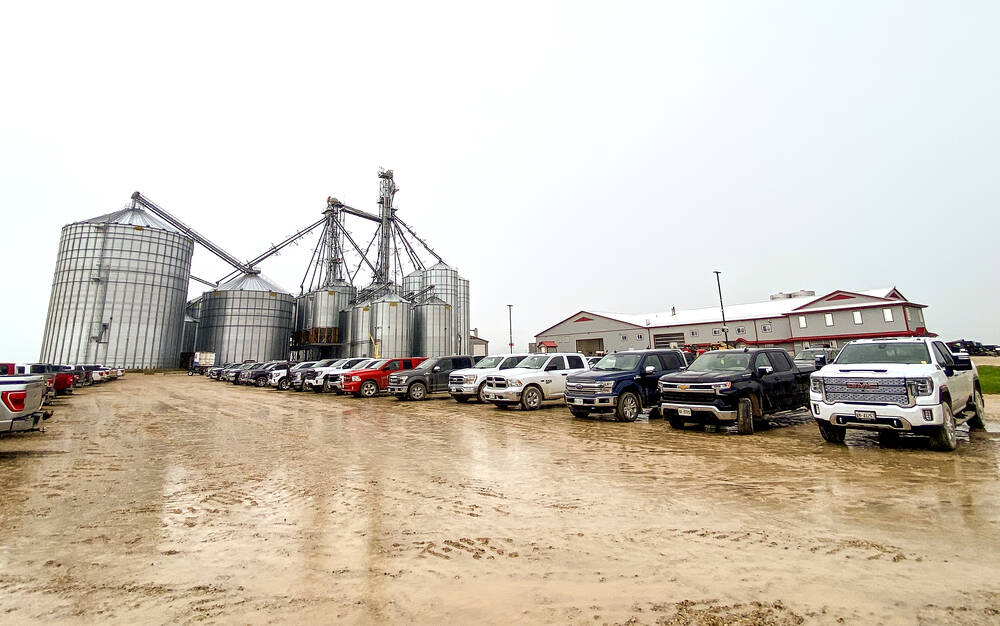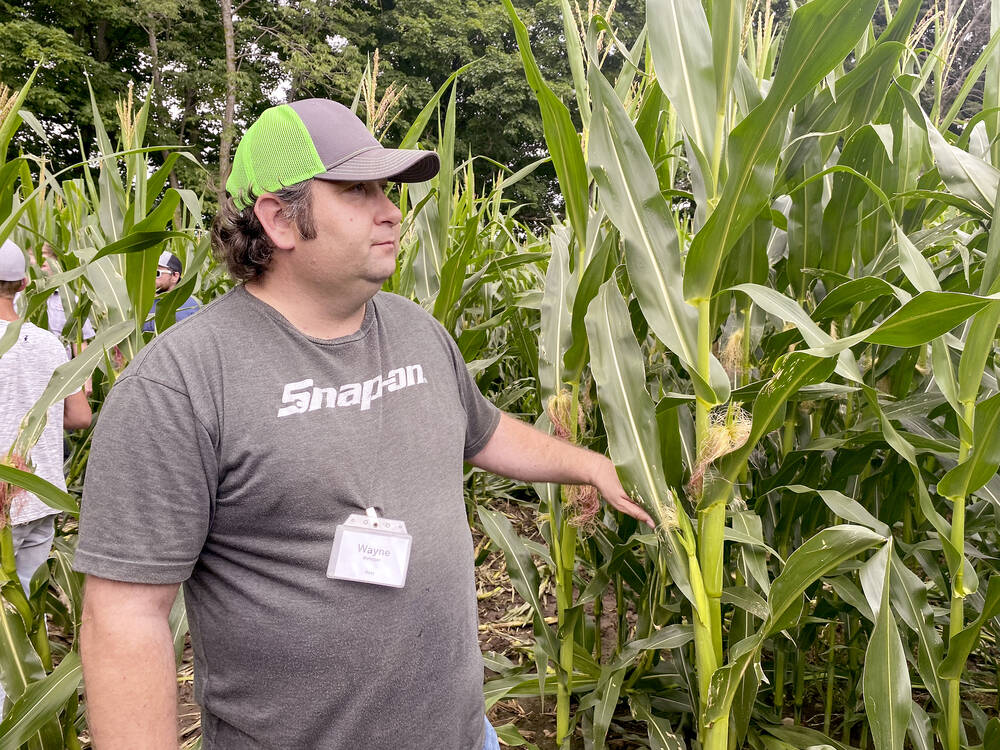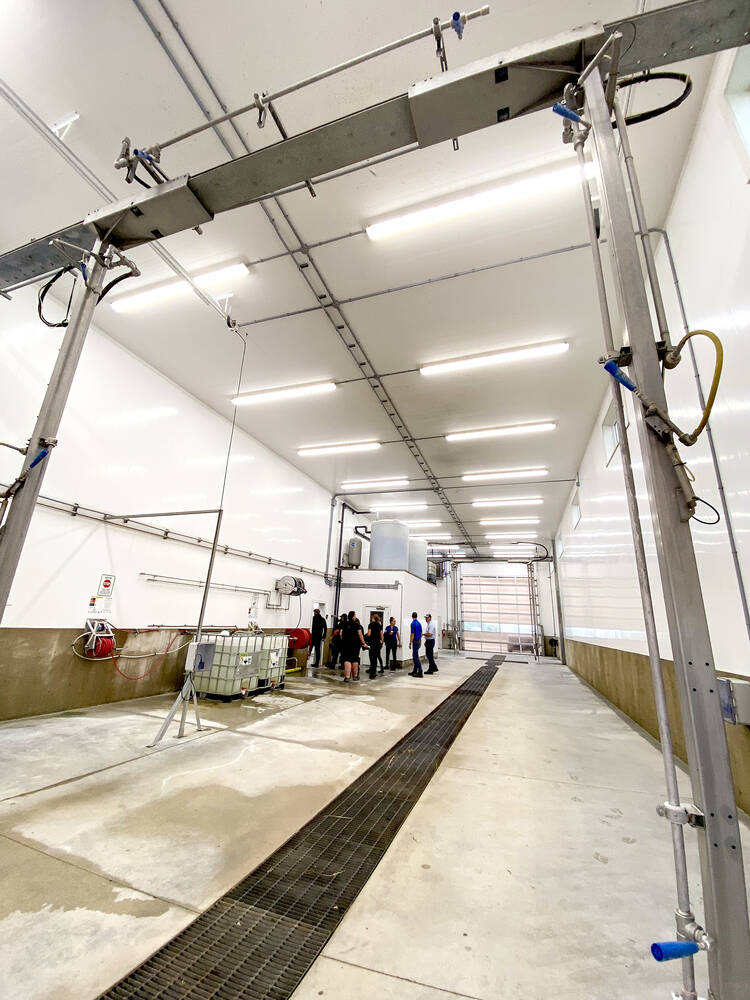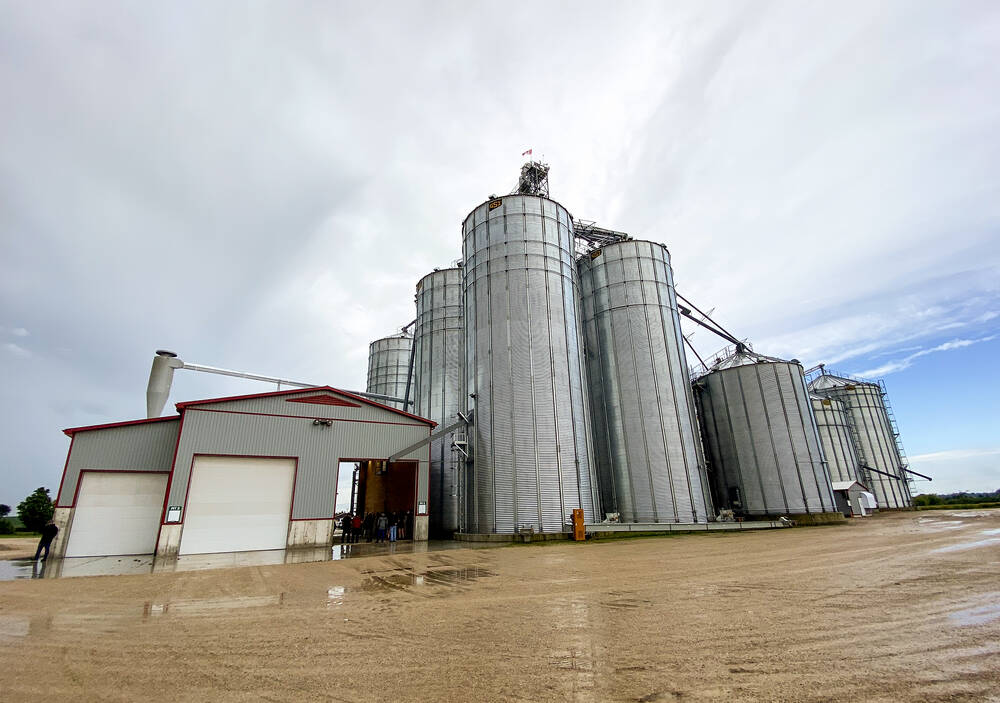Northern land prices make farm expansion attractive

When Highland Custom Farming Inc. launched in Grey County in 2005, land cost about $3,000 an acre.
Read Also


Yukon farming expands despite challenges
Glacier FarmMedia – Farming in the Yukon is filled with obstacles and opportunities, says the territory’s agriculture minister John Streicker….
It could barely grow grass, said Wayne Metzger, one of three partners in the venture.
“I’m the kind of guy that looks at garbage and goes, ‘I can turn that into something, I can turn that into gold,’” he said. “I can look at marginal land and go, ‘I can make that work, just give me a couple of years’.”
Metzger isn’t kidding. Over time, the company expanded from its humble 150-acre beginnings to owning 1,500 acres, renting 6,500 acres and custom farming 8,000 acres within a 40-kilometre radius of Proton Station.


photo:
Diana Martin
Metzger and his partners, brother-in-law Clare Bauman and friend Rod Martin, are ready to replicate that success on 10,000 acres in Iroquois Falls.
“The north is kind of back to that $3,000 per acre range, where (expansion) makes sense again,” he said.
The new venture gives Metzger and Bauman’s children an investment opportunity alongside their parents and Area One Farms.
“This is a full farm partnership. They (Area One Farms) see what we did down here, started with low land prices and built it up to this with banks,” said Metzger. “And we can do exactly the same thing out there.”
Area One Farms invests with farm partners, providing financial backing and advice while producers retain operation decision-making. In year 10, producers can choose a five-year extension, buy Area One Farms out, or both parties can agree to sell the land.
Metzger said it’s a calculated risk, but it’s invigorating to try new things and push the boundaries.
“We don’t follow. We figure it out for ourselves.”
Finding new land
Deb Campbell, owner of Agronomy Advantage and an agronomist for Highland Custom Farming, said the trio has plenty of experience clearing land and increasing organic matter. Along with their optimism and problem-solving attitudes, that will serve them well in Iroquois Falls.
“There are soils up there that are 40 per cent organic matter and soils on the same farm that are one per cent,” she said. “It’s new, and it’s different, and you have to be a bit cautious but learn from others that have made that step too.”
Campbell said Highland plants early in its southern operations, a lot earlier than most producers further south. It has forced her to accept that sometimes soil 85 per cent ready is the sweet spot for the farm operation.
The company isn’t afraid to experiment with standard row widths, plant cranberry beans at 15 inches instead of 30, barter straw for hog and poultry manure to offset fertilizer costs and push for high yields on specific fields regardless of costs.
“Eight times out of 10, those fields make us the most money,” Metzger said. “That’s how we get energized to try new things and see where we can go.”
In the last decade, the company has installed an elevator, weigh scales, a wash bay, flex space for washing or repairing implements, a mechanic shop with built-in oil-recycling tanks and office space at its Proton Station headquarters.
“They’re recycling rainwater (into the wash bay), recycling heat off the dryer,” said Campbell. “It all just goes to efficiency and minimizing leakage out to the system.”


photo:
Diana Martin
Metzger said the Area One Farms partnership helps pay for costly but necessary infrastructure in a region with scarce services.
The speed at which the purchase came together, along with land preparation and planting deadlines, derailed Metzger’s usual detailed timeline approach to farming. That schedule allows four types of beans to be successfully integrated into the system, while rapidly planting 900 acres of oats and 1,600 acres of canola.
Oats and canola are low-risk, high-performing crops for northern conditions, said Campbell, and a good choice for the farm’s first season.
Metzger said the Iroquois Falls farm’s 200,000-bushel capacity elevator will be online by September, though it won’t be available for commercial use this year. It’s first elevator’s capacity increased to 1.2 million bushels with the addition of storage bins, receiving pits and dryers. It reduced energy costs by recycling heat from the integrated three-phase generator into the dryers.
“On a hot summer day, I can see temperatures up to 100 to 120 degrees Fahrenheit in the dryer without the propane tanks,” said Martin.


photo:
Diana Martin
He anticipates increasing production to 3,500 acres in 2025, with the balance of the land coming online by early in the next decade.
“Maybe it’s rapid, but I only have so many years left,” he said with a grin.
Knowing Metzger’s love of pushing boundaries, Campbell anticipates some interesting times in the coming years.
He’s already pencilled in soybeans for the 2025 rotation and is toying with adding short-season cranberry beans.
“Why wouldn’t we use it up there? We’ve got daylight, we’ve got sunshine.”
Metzger encountered negative feedback after uploading land-clearing videos on social media. He responded by asking where people think food production acres will come from.
“We’re losing 300 acres a day in southern Ontario to urban sprawl,” he said. “We’re (clearing) 1,000 acres a year (up north). We’re not even close to matching what we’re losing.”
Metzger predicts producers will farm more land north of the French River than south of it in another century.
Source: Farmtario.com

